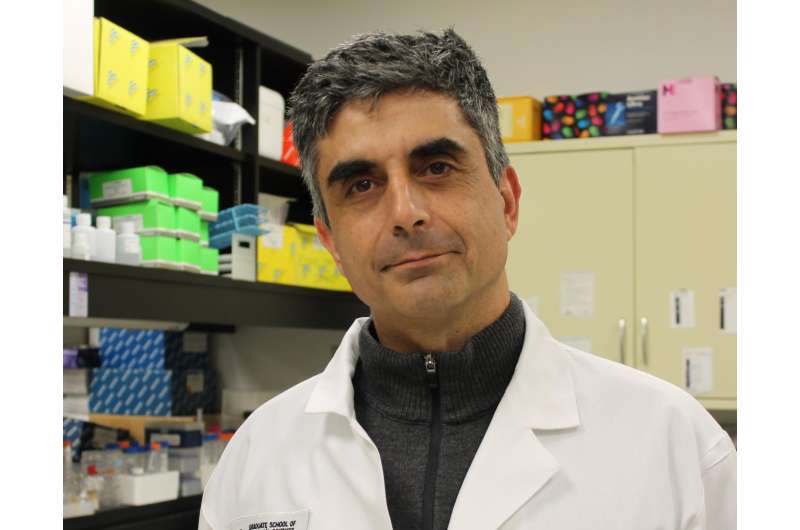Team finds way to measure key cell regulator's activity

UT Health San Antonio researchers and co-authors in New York state on Monday (Sept. 4) reported an innovative approach that will enable scientists to study the most common regulator of our bodies' cells, a molecule called guanosine-5'-triphosphate (GTP).
Nature Methods published the team's findings.
The discovery may prove useful in the screening of candidate anti-cancer compounds, said Rui Sousa, Ph.D., professor of biochemistry and structural biology in the Joe R. & Teresa Lozano Long School of Medicine at UT Health San Antonio.
GTP activates G-proteins, which regulate cell movement, growth, architecture and differentiation, including transformation into cancer cells.
By inserting GFP into a bacterial G-protein called FeoB, the scientists constructed sensors of GTP activity. A next step is to use these sensors in a process called high-throughput screening to find compounds that reduce GTP levels in target cells, Dr. Sousa said. Scientists hypothesize that this could be a way to treat disease.
UT Health San Antonio conducts high-throughput screening of compounds in the Center for Innovative Drug Discovery operated jointly by UT Health and The University of Texas at San Antonio.
On a basic science level, the scientists wanted to reveal how GTP levels vary and affect cellular function, Dr. Sousa said.
"You could say we have built a flashlight that now allows us to explore a big room that was previously dark," he said. "This room is called 'GTP biology.' What will we find when we start exploring with this flashlight? We may find quite a lot, because GTP biology could be involved in so many processes and so many disease states."
More information: Anna Bianchi-Smiraglia et al, Internally ratiometric fluorescent sensors for evaluation of intracellular GTP levels and distribution, Nature Methods (2017). DOI: 10.1038/nmeth.4404
Journal information: Nature Methods




















